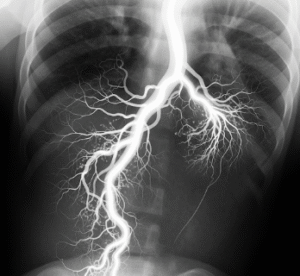In the heart of South Korea’s advanced healthcare system, a new movement is transforming how hospitals operate — the rise of Green Hospitals. These aren’t just medical facilities; they are sustainable ecosystems designed to protect both human health and the environment. Korea is leading Asia in redefining healthcare through eco-friendly architecture, renewable energy use, and sustainable medical practices.
As global awareness of climate change grows, Korean hospitals are proving that healing the planet and healing people go hand in hand.
The Meaning of “Green Hospitals”
A Green Hospital is a healthcare facility that integrates environmental sustainability into every aspect of its operations — from building design to waste management. The goal is to minimize carbon emissions, conserve resources, and create a healthier environment for patients and staff.
• Energy-efficient design: Buildings are designed to maximize sunlight, ventilation, and insulation, reducing the need for artificial lighting and air conditioning.
• Waste reduction: Hospitals reduce medical waste, recycle materials, and avoid toxic substances.
• Water conservation: Smart water systems minimize wastage and reuse treated water safely.
• Healthy interiors: Use of low-VOC paints, natural materials, and air-purifying plants creates cleaner indoor air.
In Korea, these principles are part of a growing national strategy to promote Green Medical Infrastructure, ensuring that hospitals contribute to both public health and environmental protection.
Why Sustainability Matters in Healthcare
Healthcare facilities consume enormous resources — energy, water, and single-use plastics. Hospitals operate 24/7, which means they have a large carbon footprint. Sustainable practices aren’t just good for the planet; they directly improve patient recovery rates and staff well-being.
• Clean air = faster healing: Studies show patients recover faster in low-pollution, natural-light environments.
• Reduced infections: Better ventilation and eco-friendly materials lower the risk of airborne diseases.
• Employee wellness: Green spaces and ergonomic design reduce stress and fatigue among medical workers.
• Economic efficiency: Energy-saving systems cut costs, allowing hospitals to invest more in patient care.
Korean healthcare leaders understand that a healthy environment supports healthy people — and sustainability is now seen as a core part of medical ethics.
Leading Examples of Green Hospitals in Korea
Several hospitals in Korea have already become role models for sustainable healthcare.
1. Seoul National University Hospital (SNUH)
• Introduced solar panels and geothermal heating systems to cut down fossil fuel use.
• Uses intelligent lighting systems that adjust brightness based on natural light.
• Runs waste recycling programs and uses biodegradable packaging in food services.
2. Asan Medical Center
• Designed with green rooftops and vertical gardens to absorb carbon and regulate building temperature.
• Employs energy-efficient ventilation systems and natural lighting for patient comfort.
• Implements a zero-waste goal, separating and reusing nearly 70% of its medical waste.
3. Samsung Medical Center
• Built using eco-certified materials to reduce indoor pollutants.
• Uses AI-based systems to monitor energy use and optimize resource efficiency.
• Operates an urban garden where patients can relax and recover in nature-inspired surroundings.
These hospitals show how technology and sustainability can merge to create healthier, more resilient institutions.
Sustainable Practices in Korean Healthcare
Korean hospitals are incorporating sustainability in every department — from construction to operations to patient care.
• Smart energy systems: Many hospitals now run on renewable energy sources such as solar, wind, or geothermal power.
• Green building certifications: Korea’s G-SEED certification (similar to LEED) ensures hospitals meet high environmental standards.
• Digital healthcare: Telemedicine and paperless records reduce carbon emissions from transportation and printing.
• Eco-friendly sterilization: New cleaning systems use non-toxic disinfectants and ozone technology to maintain hygiene without chemicals.
• Sustainable food programs: Hospital cafeterias are introducing locally sourced, plant-based meals for both patients and staff.
Tip: The Korean government offers Green Medical Grants to hospitals that adopt renewable technologies and energy-efficient designs.
The Role of Technology in Green Hospitals
Technology plays a vital role in driving Korea’s Green Hospital revolution. With the rise of AI, IoT (Internet of Things), and Big Data, hospitals are becoming more efficient and environmentally conscious.
• AI-based monitoring: Systems automatically adjust heating, lighting, and air conditioning to save energy.
• Smart sensors: Detect leaks, waste, or unnecessary power use in real time.
• Digital records: Reduce paper waste and storage needs while enhancing patient safety.
• Telemedicine platforms: Decrease the need for travel, cutting carbon emissions and saving time.
By combining innovation with responsibility, Korea is setting a global benchmark for sustainable healthcare technology.
Patient Experience in Green Hospitals
Korean Green Hospitals don’t just focus on environmental goals — they focus on human comfort and healing.
• Natural light and greenery: Exposure to sunlight and plants helps reduce anxiety and speed up recovery.
• Quiet, calm spaces: Eco-design principles create peaceful surroundings that promote mental well-being.
• Air and water quality: Patients breathe cleaner air and drink purified water, improving respiratory and immune health.
• Holistic wellness programs: Many hospitals offer yoga, meditation, and nutrition counseling, aligning health with sustainability.
Patients report feeling less stressed and more energized, showing that sustainable design is also therapeutic design.
Challenges in Building Green Hospitals
Despite progress, Korea faces challenges in expanding the Green Hospital model nationwide.
• High initial costs: Eco-construction and renewable systems require significant investment.
• Medical waste management: Some materials, especially disposables, are still hard to recycle safely.
• Training and awareness: Staff need continuous education on green protocols and sustainable habits.
• Policy integration: Stronger regulations are needed to make sustainability a standard across all healthcare facilities.
However, these challenges are driving innovation — leading to smart waste tracking, energy-sharing systems, and new eco-friendly hospital materials.
The Future of Sustainable Healthcare in Korea
The Korean government is actively promoting carbon-neutral hospitals as part of its 2050 Net Zero strategy. Future hospitals will rely more on renewable energy, robotic automation, and biophilic design that blends natural elements into medical spaces.
• Hospitals will feature solar façades and energy-storing glass windows.
• AI systems will monitor patient comfort while optimizing environmental conditions.
• More hospitals will collaborate with local farms to provide organic food options.
These innovations point toward a future where hospitals not only treat illness but also protect the environment that sustains life.
Final Thoughts
Korea’s Green Hospital movement is proof that sustainability and healthcare can evolve together. By focusing on clean energy, healthy environments, and responsible design, Korean hospitals are pioneering a model for the world — one where care for people extends to care for the planet.
Healing doesn’t end at the patient’s bedside — it begins with the world around us.













